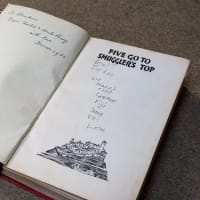下面为大家整理一篇优秀的paper代写范文- Iran's coup,供大家参考学习,这篇论文讨论了伊朗政变。1953年的伊朗政变是伊朗现代史上最重要的事件。摩萨德领导的民选政府在政变中被推翻,取而代之的是一个权威的政府。政变的成功意味着伊朗民族主义运动的失败,伊朗中产阶级支持的民主道路从此受阻。政变的成功主要有三股力量,英国是主要的策划者和提议者,美国是共同策划者和最大的赢家,伊朗的异化力量是政变的催化剂。
The coup in Iran in 1953 marks the most important event in modern Iranian history. The public selected government led by Mossadegh was overthrown during the coup, and replaced with an authoritative administration. The success of the coup meant the failure of the nationalism movement in Iran, and the path to democracy that was supported by the middle class of the country was hindered ever since. There were three major forces in the success of the coup: Britain as the major planner and prompter, America as the co-planner and the biggest winner, as well as the dissimilating forces in Iran who acted as catalysts in the coup. This paper will discuss the motivations of each party involved and the determining factors for the success of the coup, before discussing about its historical significance and implications.
Iran is a country rich in oil resources but poor in technology. It is thus not surprising that the earliest profits of the Iranian oil went to the foreigners instead of the Iranians. Through the establishment of an almost government-owned oil company, the British government was able to obtain the majority of the oil profits. In the year of 1950, for example, there was a total of over 200 million pounds of profit from oil productions in Iran, and the Iranian government was only able to get 16 out of the 200 through taxes and land usage. There were no Iranian in the British oil company, and for the Iranian government, buying oil from the company would cost even more than importing oil. It had become a common belief by the Iranians by the 40s, that the nationalization of the British oil company would bring significant improvements to the country and save it from the financial difficulties.
Mossadegh was appointed to be the prime minister of Iran in 1951. He actively pushed for the nationalization of the oil industry after assuming office. After rounds of failed negotiations, it became clear for the British government that replacing Mossadegh with pro-Britain politicians was the only way to keep control over the oil in Iran. Compared to the straight-forward motivation of the British, the motivations for the Americans to be involved were far more complicated. Unlike Britain, the Truman administration showed public support for Mossadegh, since he was considered a stabilizing factor to keep Iran from going to the communist side. After the news of successful nuclear weapon tests in USSR and the establishment of PRC, the United States was deeply concerned about the forces of communism. The countries and regions swinging between the two sides of the Cold War became the major focus of the US, in which Iran was included.
The Truman administration made a lot of efforts for Iran and Britain to negotiate on the split of profit. However, both side did not recognize the plan proposed by the US. On the other hand, the struggles with the nationalization process hurt the Iranian economy severely. The chaos in the country diminished Mossadegh’s reputation as a pivotal stabilizing figure for the country. The Iranian nationalism forces that used to support Mossadegh gradually fell apart due to some of his policies as prime minister. Some of the forces included religious figures that were almost as influential as Mossadegh, and they were able to make a huge difference if they wanted to. The undermined Mossadegh administration worried the US, as Iran was of critical location adjacent to the USSR. Replacing Mossadegh became a potential solution to stabilize Iran. Pressure from Britain, a long-term ally, finally made the US an active planner and participant of the coup.
Preparation for the coup started with the new Eisenhower administration in 1953. Discontent about the previous negotiation efforts that had gone wasted, the important figures in the US, including the candidates for the new secretary of state and the new leader of CIA, met with the British respectively expressing their supportive opinion about the coup. These preparations accelerated the process and planning for the coup in Iran quick to make it to the schedule. After some discussions between the US and Britain a plan to overthrow the Mossadegh administration was made and put in the charge of CIA. In June 1953, Operation Ajax was introduced in a cabinet meeting and was soon passed, with a suggested fund of five million dollars. While Mossadegh was aware of the actions by the US and the Britain, he was already overwhelmed with the domestic opposition forces against him. Some of these forces were supported by the Britain and US from the dark. The Shah of Iran was the final obstacle of the coup. Planners of the coup set up meetings with the Shah and revealed their plans to replace Mossadegh. Reluctantly, the Shah had no choice but to agree to cooperate.
Things accelerated after the support from the Shah was in place. On 13 August, the Shah signed an order to dismiss the role of Mossadegh and formation of a new government. However, Mossadegh refused to acknowledge the legitimacy of the order, claiming it to be faked by the opposition forces. The Shah fled after the arrest of his guards by Mossadegh. The initial setback urged CIA to make new plans. As Mossadegh questioned the authenticity of the Shah’s order, CIA hired hundreds of Iranians to spread the copies of the order, accusing Mossadegh of disloyalty. Moreover, some Iranians were bought off to organize a large-scale demonstration. This demonstration was disguised to be in support of Mossadegh, but they were secretly asked to destroy the Shah’s tombs and religious facilities. These actions successful fooled the Iranian people to turned against Mossadegh. Mossadegh tried to turn the situation around by dismiss the demonstrations, only to agitate some of his own supporters who didn’t see the truth. With the widening gap between Mossadegh and the people, he was finally left with no choice but to surrender, after armed conflicts between the two sides that caused hundreds of lives.
As a result of the coup, the seeds of democracy in Iran was eliminated, in the suppressions against the remaining supporters of Mossadegh. The direct consequence of the coup was 26 years of dictatorship under Mohammad Reza Shah. Different political voices were forbidden, with a restructure of the power of the society. The middle class and the working class were no longer having a voice in the Iran after the coup, which the US and Britain should be held responsible for. Consolidation of power made Iran a country with much more centralized power. It also buried the seeds of hatred of the Iranian people against the US, after they found out about the truth of the coup years later. After the Islamic Revolution in 1979, anti- Americanism, terrorism and extremism emotions were on the rise, which added to the complexity and instability of the Middle East. For the Iranians, the image of the US switched from the promoter of freedom to evil imperialism, which directly contributed to the current relationship between the two countries.
51due留学教育原创版权郑重声明:原创paper代写范文源自编辑创作,未经官方许可,网站谢绝转载。对于侵权行为,未经同意的情况下,51Due有权追究法律责任。主要业务有essay代写、assignment代写、paper代写服务。
51due为留学生提供最好的paper代写服务,亲们可以进入主页了解和获取更多paper代写范文 提供作业代写服务,详情可以咨询我们的客服QQ:800020041。
The coup in Iran in 1953 marks the most important event in modern Iranian history. The public selected government led by Mossadegh was overthrown during the coup, and replaced with an authoritative administration. The success of the coup meant the failure of the nationalism movement in Iran, and the path to democracy that was supported by the middle class of the country was hindered ever since. There were three major forces in the success of the coup: Britain as the major planner and prompter, America as the co-planner and the biggest winner, as well as the dissimilating forces in Iran who acted as catalysts in the coup. This paper will discuss the motivations of each party involved and the determining factors for the success of the coup, before discussing about its historical significance and implications.
Iran is a country rich in oil resources but poor in technology. It is thus not surprising that the earliest profits of the Iranian oil went to the foreigners instead of the Iranians. Through the establishment of an almost government-owned oil company, the British government was able to obtain the majority of the oil profits. In the year of 1950, for example, there was a total of over 200 million pounds of profit from oil productions in Iran, and the Iranian government was only able to get 16 out of the 200 through taxes and land usage. There were no Iranian in the British oil company, and for the Iranian government, buying oil from the company would cost even more than importing oil. It had become a common belief by the Iranians by the 40s, that the nationalization of the British oil company would bring significant improvements to the country and save it from the financial difficulties.
Mossadegh was appointed to be the prime minister of Iran in 1951. He actively pushed for the nationalization of the oil industry after assuming office. After rounds of failed negotiations, it became clear for the British government that replacing Mossadegh with pro-Britain politicians was the only way to keep control over the oil in Iran. Compared to the straight-forward motivation of the British, the motivations for the Americans to be involved were far more complicated. Unlike Britain, the Truman administration showed public support for Mossadegh, since he was considered a stabilizing factor to keep Iran from going to the communist side. After the news of successful nuclear weapon tests in USSR and the establishment of PRC, the United States was deeply concerned about the forces of communism. The countries and regions swinging between the two sides of the Cold War became the major focus of the US, in which Iran was included.
The Truman administration made a lot of efforts for Iran and Britain to negotiate on the split of profit. However, both side did not recognize the plan proposed by the US. On the other hand, the struggles with the nationalization process hurt the Iranian economy severely. The chaos in the country diminished Mossadegh’s reputation as a pivotal stabilizing figure for the country. The Iranian nationalism forces that used to support Mossadegh gradually fell apart due to some of his policies as prime minister. Some of the forces included religious figures that were almost as influential as Mossadegh, and they were able to make a huge difference if they wanted to. The undermined Mossadegh administration worried the US, as Iran was of critical location adjacent to the USSR. Replacing Mossadegh became a potential solution to stabilize Iran. Pressure from Britain, a long-term ally, finally made the US an active planner and participant of the coup.
Preparation for the coup started with the new Eisenhower administration in 1953. Discontent about the previous negotiation efforts that had gone wasted, the important figures in the US, including the candidates for the new secretary of state and the new leader of CIA, met with the British respectively expressing their supportive opinion about the coup. These preparations accelerated the process and planning for the coup in Iran quick to make it to the schedule. After some discussions between the US and Britain a plan to overthrow the Mossadegh administration was made and put in the charge of CIA. In June 1953, Operation Ajax was introduced in a cabinet meeting and was soon passed, with a suggested fund of five million dollars. While Mossadegh was aware of the actions by the US and the Britain, he was already overwhelmed with the domestic opposition forces against him. Some of these forces were supported by the Britain and US from the dark. The Shah of Iran was the final obstacle of the coup. Planners of the coup set up meetings with the Shah and revealed their plans to replace Mossadegh. Reluctantly, the Shah had no choice but to agree to cooperate.
Things accelerated after the support from the Shah was in place. On 13 August, the Shah signed an order to dismiss the role of Mossadegh and formation of a new government. However, Mossadegh refused to acknowledge the legitimacy of the order, claiming it to be faked by the opposition forces. The Shah fled after the arrest of his guards by Mossadegh. The initial setback urged CIA to make new plans. As Mossadegh questioned the authenticity of the Shah’s order, CIA hired hundreds of Iranians to spread the copies of the order, accusing Mossadegh of disloyalty. Moreover, some Iranians were bought off to organize a large-scale demonstration. This demonstration was disguised to be in support of Mossadegh, but they were secretly asked to destroy the Shah’s tombs and religious facilities. These actions successful fooled the Iranian people to turned against Mossadegh. Mossadegh tried to turn the situation around by dismiss the demonstrations, only to agitate some of his own supporters who didn’t see the truth. With the widening gap between Mossadegh and the people, he was finally left with no choice but to surrender, after armed conflicts between the two sides that caused hundreds of lives.
As a result of the coup, the seeds of democracy in Iran was eliminated, in the suppressions against the remaining supporters of Mossadegh. The direct consequence of the coup was 26 years of dictatorship under Mohammad Reza Shah. Different political voices were forbidden, with a restructure of the power of the society. The middle class and the working class were no longer having a voice in the Iran after the coup, which the US and Britain should be held responsible for. Consolidation of power made Iran a country with much more centralized power. It also buried the seeds of hatred of the Iranian people against the US, after they found out about the truth of the coup years later. After the Islamic Revolution in 1979, anti- Americanism, terrorism and extremism emotions were on the rise, which added to the complexity and instability of the Middle East. For the Iranians, the image of the US switched from the promoter of freedom to evil imperialism, which directly contributed to the current relationship between the two countries.
51due留学教育原创版权郑重声明:原创paper代写范文源自编辑创作,未经官方许可,网站谢绝转载。对于侵权行为,未经同意的情况下,51Due有权追究法律责任。主要业务有essay代写、assignment代写、paper代写服务。
51due为留学生提供最好的paper代写服务,亲们可以进入主页了解和获取更多paper代写范文 提供作业代写服务,详情可以咨询我们的客服QQ:800020041。



















※コメント投稿者のブログIDはブログ作成者のみに通知されます